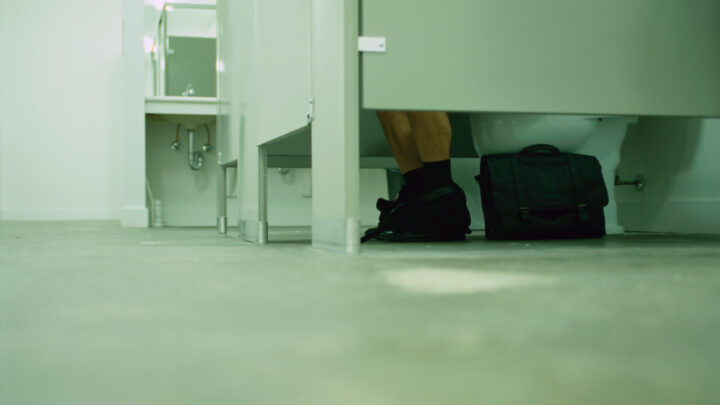
The age-old question of whether to sit or not to sit on public toilet seats continues to perplex many. Driven by hygiene concerns and the fear of encountering the unseen and the unknown, people often find themselves grappling with the decision of how to tackle nature’s call in a public restroom.
Recently, Dr. Poonam Desai shared her insights, adding a dose of wisdom to the ongoing discourse about what’s acceptable in the often intimidating realm of public restrooms and the common practice of avoiding direct contact with toilet seats. According to Dr. Desai, the fear of contracting diseases directly from toilet seats might be exaggerated. However, she emphasizes the unpleasantness of sitting on surfaces tainted by others’ urine and feces.
“Many people tend to hover or even sit on top of the toilet seat, leading to splashing of urine and feces on the toilet seat,” she said. “It’s not very likely that you contract a disease by directly sitting on the toilet seat, it is kind of gross to sit on other people’s feces or urine.”
Understanding the Risks and Realities
In her video, Dr. Desai advocates for a two-step approach to toilet seat hygiene: wiping the seat and using a toilet seat cover before sitting down. “I personally tend to wipe the toilet, put a toilet seat cover and then sit on the toilet,” Dr. Desai explained. “The reason is if you hover on top of the toilet seat, you can actually cause a strain in your pelvic muscles and incomplete emptying.”
Dr. Desai’s advice is rooted in both hygiene and health. “So if you want to not only be sanitary but also protect your pelvic muscles, it’s probably better for you to sit on the toilet seat,” she noted. She went on to say that “if all of us sat on the toilet seat using a toilet seat cover, there would be less urine and feces on the toilet seat.”
She concludes with a straightforward hygiene rule: “My general rule — wipe it down, put a toilet seat cover.”
The Importance of Proper Flushing
Meanwhile, Dr. Karl Kruszelnicki adds another layer to the conversation by addressing the importance of flushing techniques. “If you flush the toilet with the lid up, a polluted plume of bacteria and water vapour just erupts out of the flushing toilet bowl,” he explained. “And some could even settle on your toothbrush!”
“So if you flush with the toilet lid up, you could be brushing your teeth with toilet water,” Dr. Karl warned, ending his video with a humorous note, “I guess that’s one way to get the males in your house to put the toilet lid down.”
Implications for Public and Private Hygiene
In a world where hygiene awareness is paramount, these experts’ insights provide valuable tips for navigating public and private bathrooms. Whether it’s wiping down the seat or closing the lid before flushing, a few extra steps can go a long way in promoting a cleaner and healthier bathroom experience.
While the fear of public restrooms is understandable, the advice from Dr. Desai and Dr. Karl offers a practical approach to mitigating risks and enhancing personal hygiene. Their recommendations underscore the importance of simple, yet effective practices that can be easily adopted by the public.
As public awareness of hygiene continues to grow, these expert insights serve as a reminder that informed practices can significantly reduce the anxiety associated with using public facilities. The move towards better hygiene practices not only benefits individuals but also contributes to a healthier community environment.
IMPORTANT LEGAL INFO: This article is of a general nature and FYI only, because it doesn’t take into account your personal health requirements or existing medical conditions. That means it’s not personalized health advice and shouldn’t be relied upon as if it is. Before making a health-related decision, you should work out if the info is appropriate for your situation and get professional medical advice.







